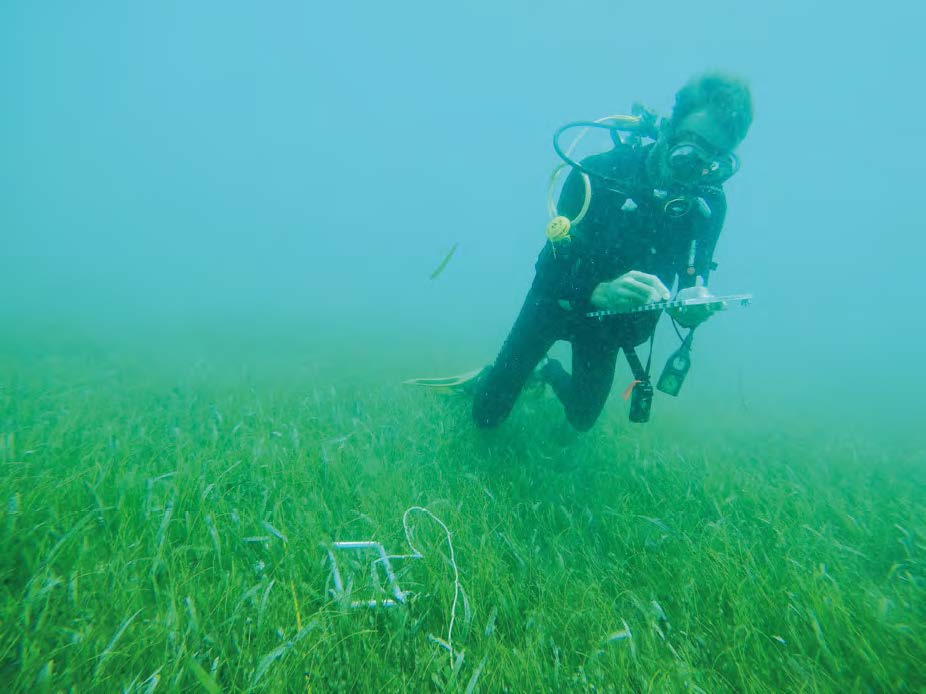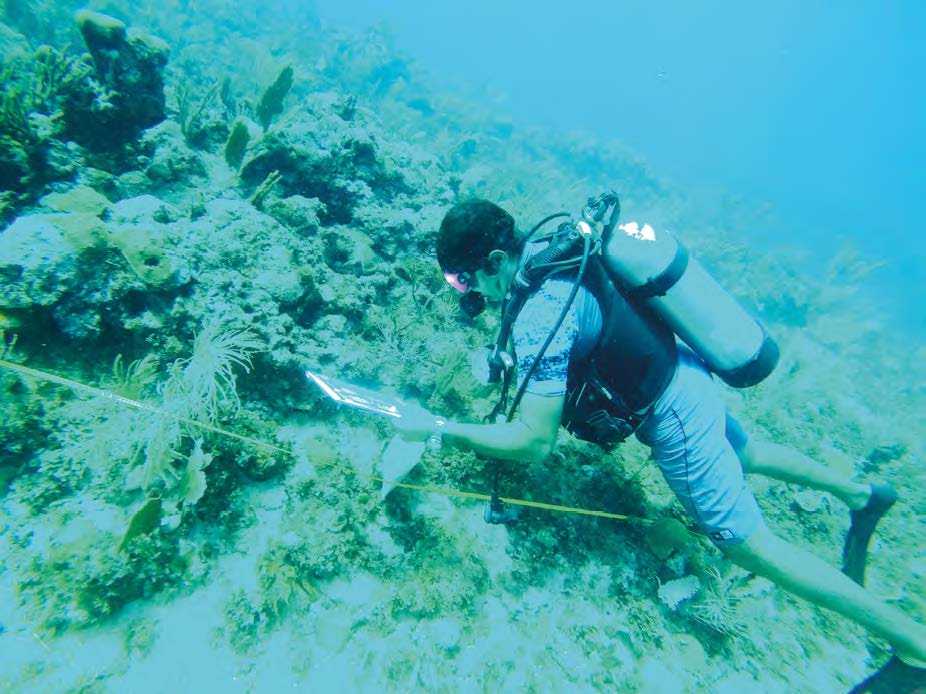Since 2007, the Réserve Naturelle has continued its annual scientific study of the reefs and plant beds. This took place this year on September 24-26, with the support of Jonas Hochart, from Saint Barth’s Territorial Environmental Agency. He helped the team from Saint Martin in documenting the evolution and general state of the coral communities and plant beds on the three reef stations— Chico, Rocher Pélican, and Fish Pot, a site located outside of the Réserve —and the three plant bed stations — Rocher Créole, Pinel, and Grand-Case, this last site also outside of the Réserve. The data is under evaluation, but the divers reported the return of sponges, which were heavily impacted by hurricane Irma. They also noted an excessive presence of dead coral colonies, also due to Irma. On the other hand they observed green algae, as well as the return of young macro-algae, which had drastically regressed due to the effects of successive swells. These algae compete for space and light with the coral, and clearly benefitted from the wastewater thrown into the sea.
Underwater collaboration between Reserves
© Julien Chalifour
Under the aegis of joint underwater projects between reserves, Julien Chalifour went to lend a hand in Saint Barth in an identical context, but this time for the reef stations at Boeuf islet and near Colombier. He also participated in the implantation of a new plantbed station in Petit-Cul-de-Sac, since the historic station in Marigot Bay disappeared due to private cutting of vegetation, which provoked soil leaching and subsequently the suffocation of plant beds. Participation in a study organized by the Réserve of Petite Terre in Guadeloupe followed shortly thereafter.


















